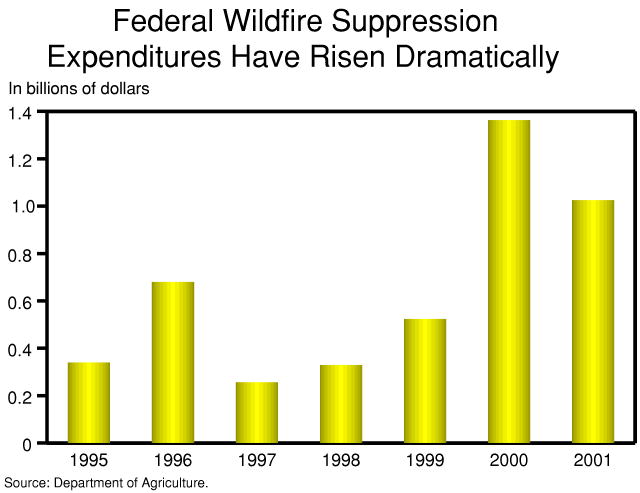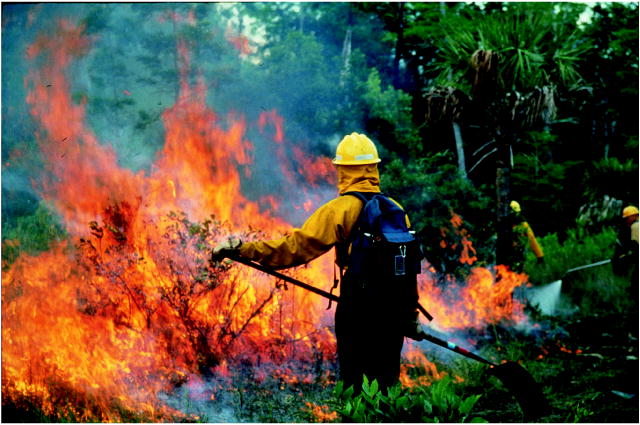Excerpt from
Budget
of the United States Government
Fiscal Year 2003
The Department of Agriculture
Stewardship on our Farms and Forests -- Wildfire Management
The long history of controlling wildfires has an unfortunate side effect—successful suppression of fires in the past has led to larger and more intense fires today. At the same time, more people are moving into areas that have traditionally been wildlands. With larger, more intense fires threatening more homes and businesses, the costs of wildfire suppression have risen dramatically.
Wildfires are a natural occurrence that help to maintain forest health and wildlife habitat. However, as the accompanying chart shows, the acreage burned from wildfires has declined sharply over the years, as the Forest Service and other land management agencies have emphasized fire suppression. This approach has exacerbated the risks from damaging catastrophic wildfires, since woody undergrowth that would have burned away in smaller, less-intense fires now has grown into thickets across the West.
Costs for suppression have also risen as the other chart shows. In 2001, the Forest Service spent $1,300 per acre in suppressing fires on 573,000 acres of forests, an increase in cost per acre of almost 300 percent over 2000. In comparison, wildfire suppression costs for the Department of the Interior (DOI) averaged about $235 per acre, although much of DOI's lands are grasslands, which burn less intensely than forests. In some western areas, the government pays more in suppressing fires than the fair market value of the structures threatened by those fires. It would literally be cheaper to let the fires burn and pay 100 percent of the rebuilding cost.

Another way to protect communities and lower fire-fighting costs is to reduce the amount of brush and small trees, especially in areas adjacent to human populations. The President’s Budget funds the Forest Service Hazardous Fuels Treatments program at $229 million, with over 70 percent of funds directed to the wildland-urban interface. This will result in the completion of buffers at eight percent of eligible vulnerable communities by the end of 2003.

On
average, 832,000 acres burn in national forests annually.
This budget also emphasizes improvements in fire management planning,
and will incorporate the results of several ongoing program reviews, so
that better decisions can be made regarding when and how to fight fires,
and fire program performance and cost effectiveness. The budget anticipates
the cost of fighting fires in a typical year. Accordingly, wildfire suppression
is funded at a 10-year average of $423 million.
To see the original report: Office of Management and Budget-Department of Agriculture